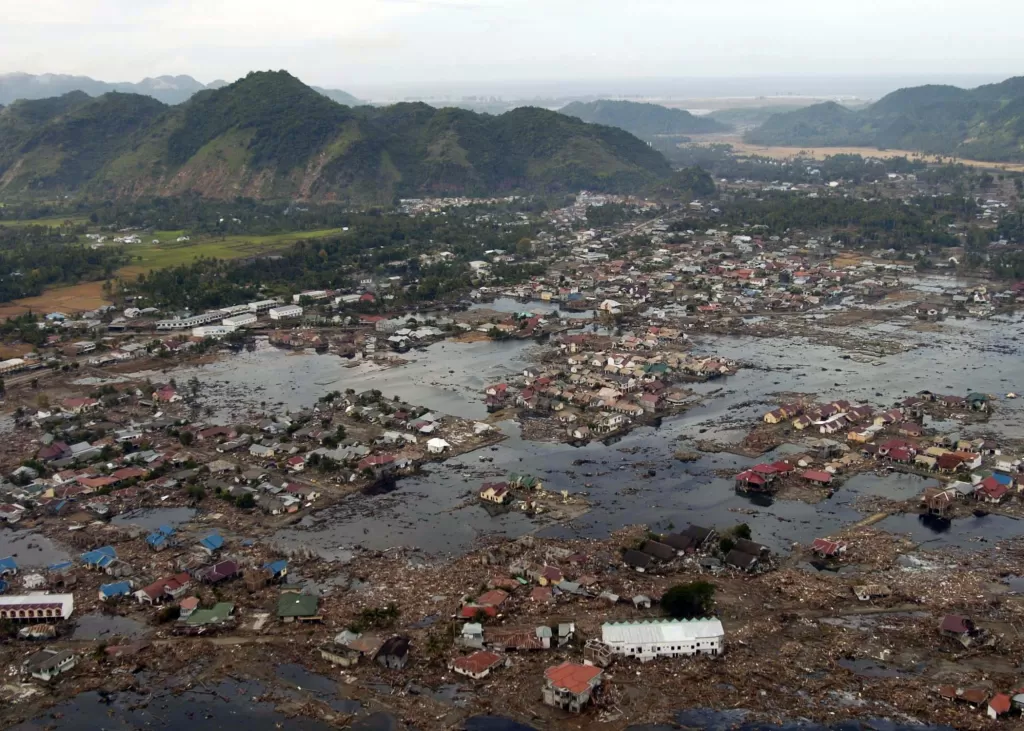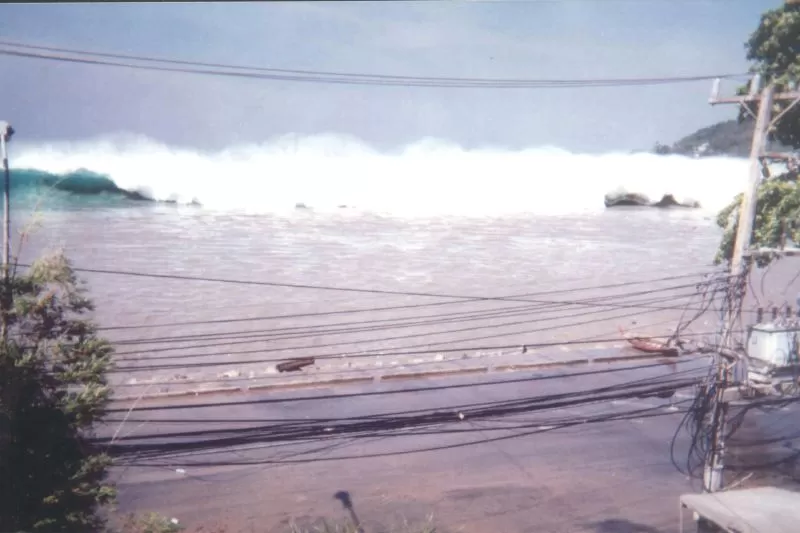Reports
Read more about how funds were spent and how the response to this disaster was evaluated.

An image taken from a US Navy plane shows a village on the coast of Sumatra in ruins after the tsunami. Image: US Navy

An image of the tsunami approaching Phuket, Thaliand, captured by a member of the public. Image: Zalzadore
The aftermath of the tsunami in Sri Lanka in 2005. Image: Howard Davies/Exile Images
When Sabri and her family moved into their newly built home in 2006, she was moved to tears and said: “I don’t know what to say. I am very pleased and happy but so overwhelmed I am crying… I was so stressed thinking about our situation but the new house from the British Red Cross is like a medicine for us and we are thankful to the people in Britain for helping us.”
DEC member charities including the British Red Cross built more than 13,700 new homes like Sabri’s, which were designed to be more earthquake resistant, providing long term safety to families affected by this disaster.
Read more about how funds were spent and how the response to this disaster was evaluated.
